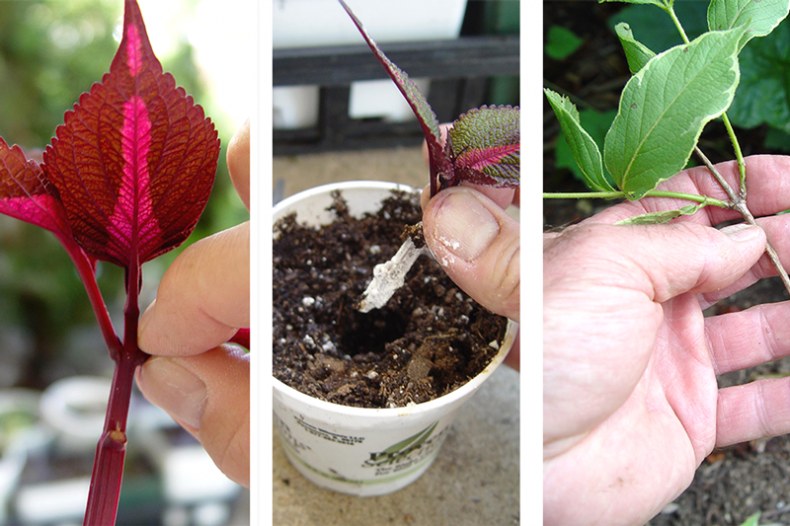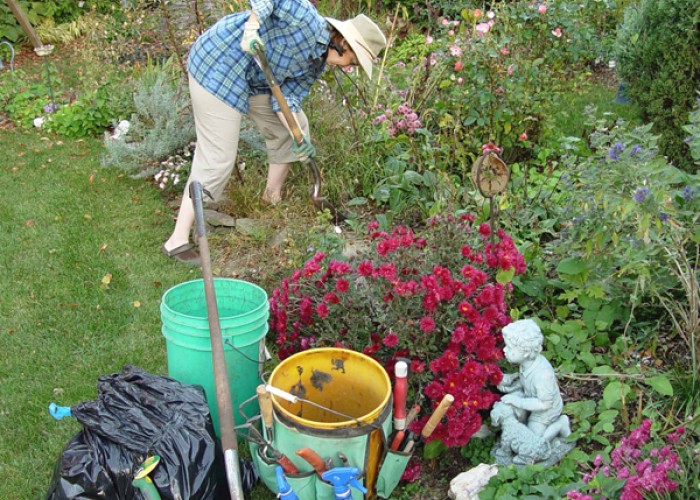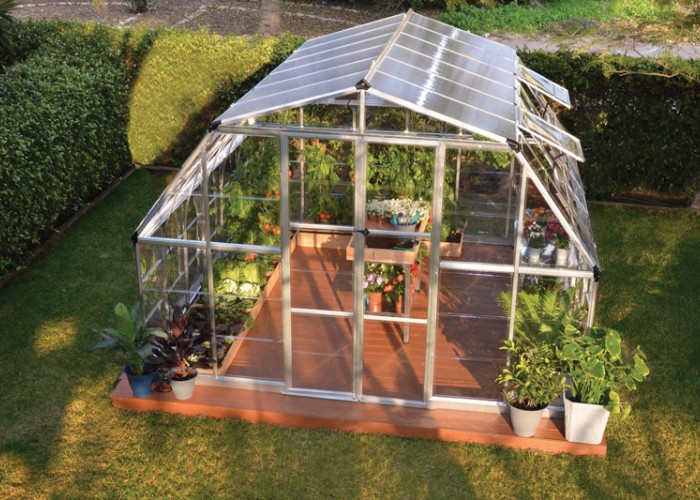How to Make Your Own Plants from Cuttings
Tips and tricks to create and nurture a garden from existing plants
By George WeigelMany landscape plants can be reproduced at little to no cost by taking cuttings from the tips of a parent plant and sticking them in moist potting mix. The process causes plants to send out roots from the cut ends, which results in a new “baby” plant that’s an exact copy of the parent. This is one of the main ways that growers produce new plants and it’s easier than you might think.
Replanting from cuttings
Start by snipping a four- to six-inch section off the branch tip of a parent plant. Then pinch off leaves from all but the top set or two.
Stick the cut end into a pot of a lightweight, soilless mix so that at least one — preferably two or three — sets of the leaf pinch-off points (called “nodes”) are buried.
A good mix is half coarse sand and half vermiculite, perlite and/or a lightweight potting mix.
Keep the medium consistently damp, and within a few weeks, new roots should poke out from the buried nodes. A good sign is when tiny new leaves start growing out of the cutting’s tip.
Tips and tricks
Dipping the cut ends in a powdered rooting hormone before sticking them in the mix sometimes encourages rooting. These inexpensive powders are available in small containers in most garden centers and catalogs.
Misting two to three times a day or installing a plastic-wrap “tent” over the pots are ways to help keep the potting medium moist until rooting occurs.
Increase success with cuttings by growing the young plants in a shaded or similar protected area in pots until the rootballs have matured to sizes similar to what you’d find in store-bought plants.
Plants that can be reproduced
Many tropicals and annual and perennial flowers can be reproduced by tip cuttings, including coleus, geraniums, salvia, mums, begonias, impatiens, fuchsia, Persian shield, monstera, philodendron, plectranthus, purple-heart (Setcreasea) and jade plants.
But many trees, shrubs and evergreens can also be reproduced by the same process. Some of the easiest are roses, boxwoods, hollies, junipers, elderberries, azaleas, dogwoods, gardenias, hydrangeas and forsythia.
With woody plants, timing is a key variable. Some root best from young or “softwood cuttings” taken in late spring to early summer, while others root best from mature or “hardwood cuttings” taken in fall.
If you don’t get rooting on your first try, try again at a different time of year.
Remember, even if you get just one cutting to root, that’s one free plant you didn’t have before.
-
Gardening on a budget
-
Share this story:






